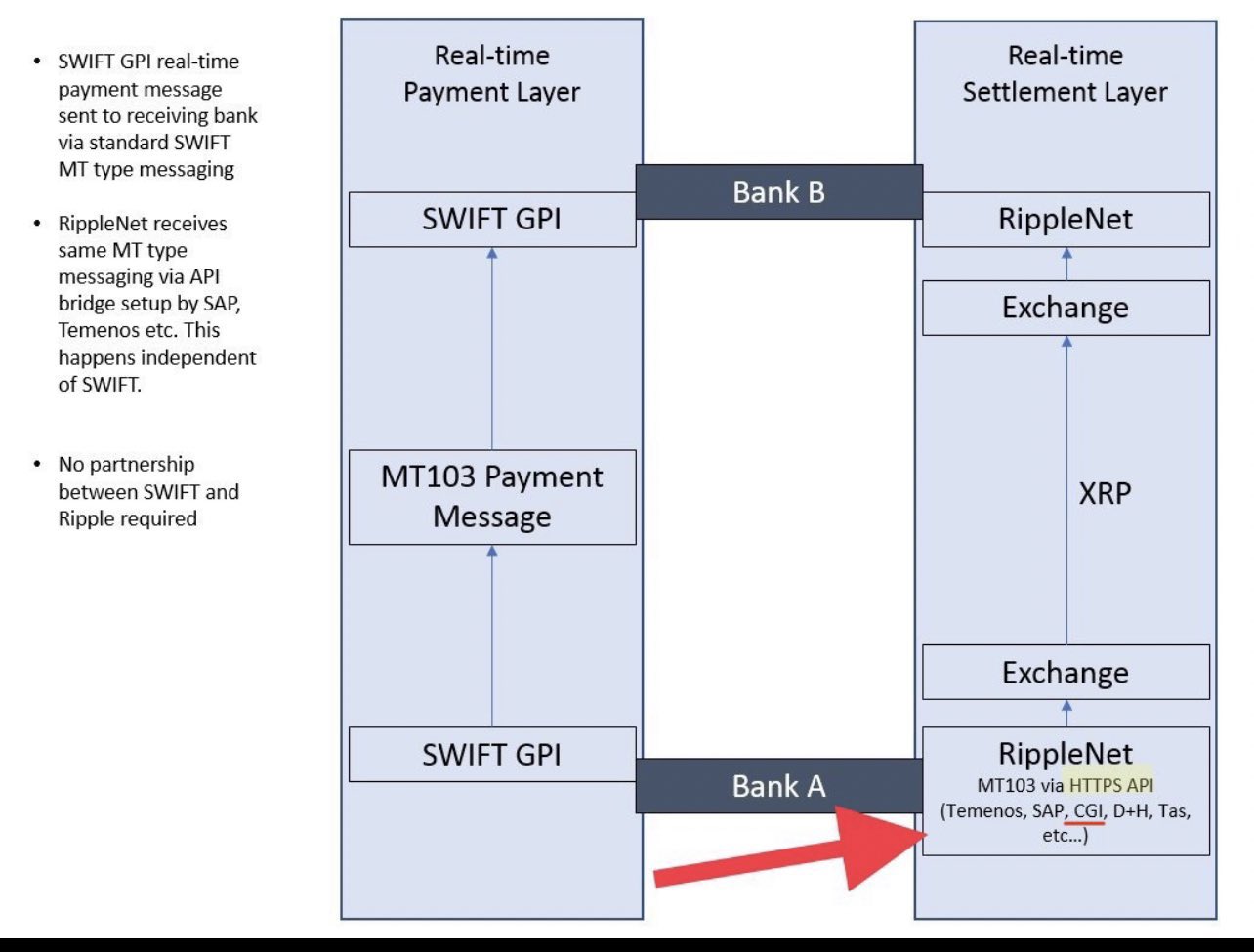SWIFT’s Stealth Play: How They’re Tapping XRP Without a Direct Ripple Link
SWIFT just pulled off the ultimate crypto sidestep—leveraging XRP's rails without ever shaking Ripple's hand.
The Backchannel Bridge
Instead of formal partnerships, SWIFT's using third-party liquidity providers that already integrated RippleNet. They're essentially piggybacking on existing infrastructure—getting all the speed benefits without the paperwork. Cross-border settlements that used to take days now clear in seconds. No memos, no press releases, just pure efficiency.
Why It Burns Traditional Finance
Banks get XRP's liquidity without touching Ripple's legal baggage. It's like ordering delivery from a restaurant that's suing your kitchen—everyone gets fed, but nobody's exchanging recipes. SWIFT maintains plausible deniability while cutting settlement costs by up to 60%. Classic banking maneuver: adopt the tech, avoid the branding.
The Ironic Twist
Meanwhile, Ripple's still fighting the SEC over whether XRP is a security—while the world's biggest banking network quietly uses it anyway. Sometimes innovation doesn't need permission, just a loophole and a wink. And frankly? Watching legacy finance pretend to dislike crypto while vacuuming up its efficiencies never gets old. They'll deny it over champagne at Davos, but the ledger doesn't lie.
 Does This Actually Work? Ripple Dev Responds
SMQKE’s recent revelation about how Ripple, XRP, and the SWIFT system could work together raised eyebrows across the crypto community, including among influential voices in the XRP space. Many have questioned the legitimacy of the document he presented.
One of the most vocal critics was XRP-focused YouTuber Crypto Eri. She publicly called on Neil Hartner, a software engineer at Ripple specializing in Ripple Payments, to weigh in on the document and clarify whether the proposed workflow is technically viable, especially since SMQKE did not cite a source.
In response, Hartner described the scenario as “plausible”. He added that, from a technical view, the flow could indeed be implemented. He noted that, theoretically, a bank could send the MT103 message to the Ripple Payments (formerly RippleNet) API using the additional_info field.
However, Hartner also stated that he could not comment on specific vendor names, cautioning: “Don’t read too much into my answer.”
https://twitter.com/illneil/status/1956357863393358148
ISO 20022 at Work
A crucial factor behind this interoperability is ISO 20022, the global standard for financial messaging. Ripple is one of the foremost payment institutions to adopt this standard.
By aligning with ISO 20022, RippleNet ensures compatibility with traditional networks like SWIFT and newer blockchain-based systems. This reduces fragmentation and paves the way for APIs and distributed ledger technology to support real-time settlement and improved cross-border efficiency.
XRP Ledger to Capture Part of SWIFT Volume
While Ripple and SWIFT have no formal partnership, members of the XRP community continue to hold out hope for either a future partnership or for a scenario in which Ripple ultimately replaces SWIFT.
At the 2025 XRPL Apex event, Ripple CEO Brad Garlinghouse stated that the XRP Ledger (XRPL) could manage up to 14% of SWIFT’s transaction volume by 2030.
According to Forbes, SWIFT processes approximately $150 trillion in annual transaction volume. If XRPL were to capture 14% of that, it would amount to roughly $21 trillion flowing through XRPL each year.
Based on this projection, an analysis estimated that if XRP were to turn over 30 times per year, a liquidity pool of around $700 billion would be required. With XRP’s circulating supply, this would imply a token price in the range of approximately $11 to $24.
However, it’s important to note that these projections are purely speculative.
Does This Actually Work? Ripple Dev Responds
SMQKE’s recent revelation about how Ripple, XRP, and the SWIFT system could work together raised eyebrows across the crypto community, including among influential voices in the XRP space. Many have questioned the legitimacy of the document he presented.
One of the most vocal critics was XRP-focused YouTuber Crypto Eri. She publicly called on Neil Hartner, a software engineer at Ripple specializing in Ripple Payments, to weigh in on the document and clarify whether the proposed workflow is technically viable, especially since SMQKE did not cite a source.
In response, Hartner described the scenario as “plausible”. He added that, from a technical view, the flow could indeed be implemented. He noted that, theoretically, a bank could send the MT103 message to the Ripple Payments (formerly RippleNet) API using the additional_info field.
However, Hartner also stated that he could not comment on specific vendor names, cautioning: “Don’t read too much into my answer.”
https://twitter.com/illneil/status/1956357863393358148
ISO 20022 at Work
A crucial factor behind this interoperability is ISO 20022, the global standard for financial messaging. Ripple is one of the foremost payment institutions to adopt this standard.
By aligning with ISO 20022, RippleNet ensures compatibility with traditional networks like SWIFT and newer blockchain-based systems. This reduces fragmentation and paves the way for APIs and distributed ledger technology to support real-time settlement and improved cross-border efficiency.
XRP Ledger to Capture Part of SWIFT Volume
While Ripple and SWIFT have no formal partnership, members of the XRP community continue to hold out hope for either a future partnership or for a scenario in which Ripple ultimately replaces SWIFT.
At the 2025 XRPL Apex event, Ripple CEO Brad Garlinghouse stated that the XRP Ledger (XRPL) could manage up to 14% of SWIFT’s transaction volume by 2030.
According to Forbes, SWIFT processes approximately $150 trillion in annual transaction volume. If XRPL were to capture 14% of that, it would amount to roughly $21 trillion flowing through XRPL each year.
Based on this projection, an analysis estimated that if XRP were to turn over 30 times per year, a liquidity pool of around $700 billion would be required. With XRP’s circulating supply, this would imply a token price in the range of approximately $11 to $24.
However, it’s important to note that these projections are purely speculative.

